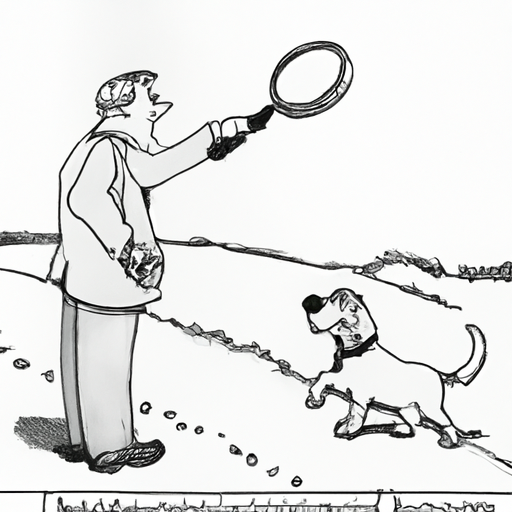A Look Into Canine Olfaction
You’re probably familiar with the fact that a dog’s sense of smell is vastly superior to ours. But do you know just how far they can pick up scents, specifically the scent of their owners?
Imagine you’ve walked out the door for an errand, leaving your furry friend at home. As you move further away, your scent diminishes. Yet, your dog, with their extraordinary olfactory abilities, can still recognize your scent even when you are miles away.
Dogs have an estimated 300 million olfactory receptors in their noses, compared to our measly 6 million. This means their sense of smell is somewhere between 10,000 to 100,000 times more acute than ours!
The Science Behind A Dog’s Sense of Smell
So, how exactly can dogs smell so well? It’s all down to their biology.
- Complex Nasal Architecture: Dogs’ nostrils are designed in such a way that they can take in air and still hold the scent of the previous sniff. This allows dogs to continuously track scents without interruption.
- The Vomeronasal Organ: Also known as Jacobson’s organ, this is a special part of a dog’s nasal anatomy specifically designed to detect pheromones, the chemicals unique to each individual animal.
- Large Olfactory Cortex: This part of the dog’s brain is 40 times larger than that of a human’s. It processes different smells and is the reason why dogs can remember and recognize specific scents, like their owner’s.
How Far Can Dogs Smell Their Owners?
While it’s difficult to pinpoint an exact distance, some experts suggest that dogs can smell their owners from miles away.
The wind direction, atmospheric conditions, and the strength of the person’s scent are all factors that can affect this. For example, if you were swept away by a river, your dog might be able to pick up your scent from over a mile downstream.
Factors That Can Affect a Dog’s Ability to Smell
While dogs have an impressive sense of smell, there are several factors that can affect their ability to detect scents:
- Age: Just like humans, dogs’ senses can decline with age. Older dogs may not have as sharp a sense of smell as they used to.
- Health: Illnesses, especially those affecting the nose or throat, can impact a dog’s sense of smell.
- Breed: Some breeds have a more developed sense of smell than others. For example, Bloodhounds are known for their exceptional tracking abilities.
Training Your Dog to Use Their Sense of Smell
You can help your dog improve their sniffing and tracking skills by engaging them in scent-focused games and exercises. Here are some tips to get you started:
- Hide and Seek: Start by hiding treats around your home and encouraging your dog to find them. Once they get the hang of it, you can make the game more challenging by hiding the treats in harder-to-find places.
- Track a Trail: Create a scent trail using a specific smell, like a piece of clothing, and let your dog track it. This can also be a great way to train your dog in case of emergencies.
- Professional Training: For those interested in taking it a step further, there are professional scent tracking courses and workshops available.
FAQ
Q: What is the most scent-sensitive dog breed?
A: The Bloodhound is considered the most scent-sensitive breed, capable of tracking scents over great distances and even days later.
Q: Can a dog forget its owner’s scent?
A: Dogs have a remarkable memory when it comes to scents and it’s unlikely they would forget their owner’s scent, especially if they had a strong bond.
Q: Can dogs smell fear?
A: Yes, dogs can pick up on human emotions such as fear or anxiety through changes in our scent and body language.
Q: How can I improve my dog’s sense of smell?
A: Regular exercise and mental stimulation, like scent-based games, can help improve your dog’s olfactory abilities.



